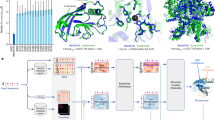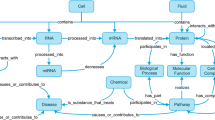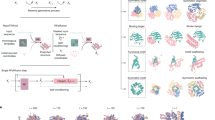Abstract
Approximate density functional theory has become indispensable owing to its balanced cost–accuracy trade-off, including in large-scale screening. To date, however, no density functional approximation (DFA) with universal accuracy has been identified, leading to uncertainty in the quality of data generated from density functional theory. With electron density fitting and Δ-learning, we build a DFA recommender that selects the DFA with the lowest expected error with respect to the gold standard (but cost-prohibitive) coupled cluster theory in a system-specific manner. We demonstrate this recommender approach on the evaluation of vertical spin splitting energies of transition metal complexes. Our recommender predicts top-performing DFAs and yields excellent accuracy (about 2 kcal mol−1) for chemical discovery, outperforming both individual Δ-learning models and the best conventional single-functional approach from a set of 48 DFAs. By demonstrating transferability to diverse synthesized compounds, our recommender potentially addresses the accuracy versus scope dilemma broadly encountered in computational chemistry.
This is a preview of subscription content, access via your institution
Access options
Access Nature and 54 other Nature Portfolio journals
Get Nature+, our best-value online-access subscription
$29.99 / 30 days
cancel any time
Subscribe to this journal
Receive 12 digital issues and online access to articles
$99.00 per year
only $8.25 per issue
Buy this article
- Purchase on Springer Link
- Instant access to full article PDF
Prices may be subject to local taxes which are calculated during checkout





Similar content being viewed by others
Data availability
Source data for Figs. 2–5 are available with this manuscript. All structures and energies used to train the models along with the trained machine learning models are available at ref. 56 (https://doi.org/10.5281/zenodo.7350957).
Code availability
All models and Python scripts to reproduce results reported in this work can be found at Ref. 56 (https://doi.org/10.5281/zenodo.7350957).
References
Coley, C. W., Eyke, N. S. & Jensen, K. F. Autonomous discovery in the chemical sciences part I: progress. Angew. Chem. Int. Ed. Engl. 59, 22858–22893 (2020).
Jain, A. et al. Commentary: the materials project: a materials genome approach to accelerating materials innovation. APL Mater. 1, 011002 (2013).
Butler, K. T., Davies, D. W., Cartwright, H., Isayev, O. & Walsh, A. Machine learning for molecular and materials science. Nature 559, 547–555 (2018).
Carleo, G. et al. Machine learning and the physical sciences. Rev. Mod. Phys. 91, 045002 (2019).
Nandy, A. et al. Computational discovery of transition-metal complexes: from high-throughput screening to machine learning. Chem. Rev. 121, 9927–10000 (2021).
Cohen, A. J., Mori-Sánchez, P. & Yang, W. Challenges for density functional theory. Chem. Rev. 112, 289–320 (2012).
Mardirossian, N. & Head-Gordon, M. Thirty years of density functional theory in computational chemistry: an overview and extensive assessment of 200 density functionals. Mol. Phys. 115, 2315–2372 (2017).
Duan, C., Chen, S., Taylor, M. G., Liu, F. & Kulik, H. J. Machine learning to tame divergent density functional approximations: a new path to consensus materials design principles. Chem. Sci. 12, 13021–13036 (2021).
Loipersberger, M., Cabral, D. G. A., Chu, D. B. K. & Head-Gordon, M. Mechanistic insights into Co and Fe quaterpyridine-based CO2 reduction catalysts: metal–ligand orbital interaction as the key driving force for distinct pathways. J. Am. Chem. Soc. 143, 744–763 (2021).
Zhang, D. Y. & Truhlar, D. G. Spin splitting energy of transition metals: a new, more affordable wave function benchmark method and its use to test density functional theory. J. Chem. Theory Comput. 16, 4416–4428 (2020).
Zhang, L., Han, J., Wang, H., Car, R. & E, W. Deep potential molecular dynamics: a scalable model with the accuracy of quantum mechanics. Phys. Rev. Lett. 120, 143001 (2018).
Smith, J. S., Isayev, O. & Roitberg, A. E. ANI-1: an extensible neural network potential with DFT accuracy at force field computational cost. Chem. Sci. 8, 3192–3203 (2017).
Batzner, S. et al. E(3)-equivariant graph neural networks for data-efficient and accurate interatomic potentials. Nat. Commun. 13, 2453 (2022).
Sauceda, H. E. et al. BIGDML—towards accurate quantum machine learning force fields for materials. Nat. Commun. 13, 3733 (2022).
Dick, S. & Fernandez-Serra, M. Machine learning accurate exchange and correlation functionals of the electronic density. Nat. Commun. 11, 3509 (2020).
Kirkpatrick, J. et al. Pushing the frontiers of density functionals by solving the fractional electron problem. Science 374, 1385–1389 (2021).
Li, L. et al. Kohn-sham equations as regularizer: building prior knowledge into machine-learned physics. Phys. Rev. Lett. 126, 036401 (2021).
Ma, H., Narayanaswamy, A., Riley, P. & Li, L. Evolving symbolic density functionals. Sci. Adv. 8, eabq0279 (2022).
Hermann, J., Schätzle, Z. & Noé, F. Deep-neural-network solution of the electronic Schrödinger equation. Nat. Chem. 12, 891–897 (2020).
Kauwe, S. K., Graser, J., Murdock, R. & Sparks, T. D. Can machine learning find extraordinary materials? Comput. Mater. Sci. 174, 109498 (2020).
McAnanama-Brereton, S. & Waller, M. P. Rational density functional selection using game theory. J. Chem. Inf. Model. 58, 61–67 (2018).
Jiang, W., DeYonker, N. J., Determan, J. J. & Wilson, A. K. Toward accurate theoretical thermochemistry of first row transition metal complexes. J. Phys. Chem. A 116, 870–885 (2012).
Kohn, W. & Sham, L. J. Self-consistent equations including exchange and correlation effects. Phys. Rev. 140, A1133–A1138 (1965).
Margraf, J. T. & Reuter, K. Pure non-local machine-learned density functional theory for electron correlation. Nat. Commun. 12, 344 (2021).
Grisafi, A. et al. Transferable machine-learning model of the electron density. ACS Cent. Sci. 5, 57–64 (2019).
Frénay, B. & Verleysen, M. Classification in the presence of label noise: a survey. IEEE Trans. Neural Netw. Learn. Syst. 25, 845–869 (2013).
Floser, B. M., Guo, Y., Riplinger, C., Tuczek, F. & Neese, F. Detailed pair natural orbital-based coupled cluster studies of spin crossover energetics. J. Chem. Theory Comput. 16, 2224–2235 (2020).
Perdew, J. P. & Schmidt, K. Jacob’s ladder of density functional approximations for the exchange-correlation energy. Density Funct. Theory Its Application Mater. 577, 1–20 (2001).
Harper, D. R. et al. Representations and strategies for transferable machine learning improve model performance in chemical discovery. J. Chem. Phys. 156, 074101 (2022).
Duan, C., Liu, F., Nandy, A. & Kulik, H. J. Data-driven approaches can overcome the cost-accuracy trade-off in multireference diagnostics. J. Chem. Theory Comput. 16, 4373–4387 (2020).
Lehtola, S. Assessment of initial guesses for self-consistent field calculations. Superposition of atomic potentials: simple yet efficient. J. Chem. Theory Comput. 15, 1593–1604 (2019).
Maurer, L. R., Bursch, M., Grimme, S. & Hansen, A. Assessing density functional theory for chemically relevant open-shell transition metal reactions. J. Chem. Theory Comput. 17, 6134–6151 (2021).
Miyato, T., Maeda, S. I., Koyama, M. & Ishii, S. Virtual adversarial training: a regularization method for supervised and semi-supervised learning. IEEE Trans. Pattern Anal. Mach. Intell. 41, 1979–1993 (2019).
Janet, J. P. & Kulik, H. J. Resolving transition metal chemical space: feature selection for machine learning and structure-property relationships. J. Phys. Chem. A 121, 8939–8954 (2017).
Groom, C. R., Bruno, I. J., Lightfoot, M. P. & Ward, S. C. The cambridge structural database. Acta Crystallogr. B. 72, 171–179 (2016).
Janet, J. P., Duan, C., Yang, T. H., Nandy, A. & Kulik, H. J. A quantitative uncertainty metric controls error in neural network-driven chemical discovery. Chem. Sci. 10, 7913–7922 (2019).
Hohenberg, P. & Kohn, W. Inhomogeneous electron gas. Phys. Rev. 136, 8864–8871 (1964).
Pritchard, B. P., Altarawy, D., Didier, B., Gibson, T. D. & Windus, T. L. New basis set exchange: an open, up-to-date resource for the molecular sciences community. J. Chem. Inf. Model. 59, 4814–4820 (2019).
Behler, J. & Parrinello, M. Generalized neural-network representation of high-dimensional potential-energy surfaces. Phys. Rev. Lett. 98, 146401 (2007).
Becke, A. D. Density-functional thermochemistry. III. The role of exact exchange. J. Chem. Phys. 98, 5648–5652 (1993).
Stephens, P. J., Devlin, F. J., Chabalowski, C. F. & Frisch, M. J. Ab initio calculation of vibrational absorption and circular dichroism spectra using density functional force fields. J. Phys. Chem. 98, 11623–11627 (1994).
Seritan, S. et al. TeraChem: a graphical processing unit-accelerated electronic structure package for large-scale ab initio molecular dynamics. WIREs Comput. Mol. Sci. 11, e1494 (2021).
Ufimtsev, I. S. & Martinez, T. J. Quantum chemistry on graphical processing units. 3. Analytical energy gradients, geometry optimization, and first principles molecular dynamics. J. Chem. Theory Comput. 5, 2619–2628 (2009).
Hay, P. J. & Wadt, W. R. Ab initio effective core potentials for molecular calculations. Potentials for K to Au including the outermost core orbitals. J. Chem. Phys. 82, 299–310 (1985).
Saunders, V. R. & Hillier, I. H. A “level-shifting” method for converging closed shell Hartree–Fock wave functions. Int. J. Quant. Chem. 7, 699–705 (1973).
Ioannidis, E. I., Gani, T. Z. H. & Kulik, H. J. molSimplify: a toolkit for automating discovery in inorganic chemistry. J. Comput. Chem. 37, 2106–2117 (2016).
Wang, L.-P. & Song, C. Geometry optimization made simple with translation and rotation coordinates. J. Chem. Phys. 144, 214108 (2016).
Finney, B. A., Chowdhury, S. R., Kirkvold, C. & Vlaisavljevich, B. CASPT2 molecular geometries of Fe(II) spin-crossover complexes. Phys. Chem. Chem. Phys. 24, 1390–1398 (2022).
Duan, C., Janet, J. P., Liu, F., Nandy, A. & Kulik, H. J. Learning from failure: predicting electronic structure calculation outcomes with machine learning models. J. Chem. Theory Comput. 15, 2331–2345 (2019).
Smith, D. G. A. et al. PSI4 1.4: open-source software for high-throughput quantum chemistry. J. Chem. Phys. 152, 184108 (2020).
Liu, F. et al. Bridging the homogeneous–heterogeneous divide: modeling spin for reactivity in single atom catalysis. Front. Chem. 7, 219 (2019).
Reiher, M. Theoretical study of the Fe(phen)2(NCS)2 spin-crossover complex with reparametrized density functionals. Inorg. Chem. 41, 6928–6935 (2002).
Shee, J., Arthur, E. J., Zhang, S., Reichman, D. R. & Friesner, R. A. Phaseless auxiliary-field quantum monte carlo on graphical processing units. J. Chem. Theory Comput. 14, 4109–4121 (2018).
Bergstra, J., Yamins, D. & Cox, D. D. HyperOpt: A Python Library for Optimizing the Hyperparameters of Machine Learning Algorithms. In Proceedings of the 12th Python in Science Conference, 13, 20 (2013).
Pytorch https://pytorch.org/ (2022).
Duan, C., Nandy, A., Meyer, R., Arunachalam, N. & Kulik, H. J. A transferable recommender approach for selecting the best density functional approximations in chemical discovery. Zenodo https://doi.org/10.5281/zenodo.7350957 (2022).
Acknowledgements
This work was supported by the U.S. Department of Energy, Office of Science, Office of Advanced Scientific Computing, Office of Basic Energy Sciences, via the Scientific Discovery through Advanced Computing program (R.M.) as well as by the Office of Naval Research under grant nos. N00014-18-1-2434 (A.N.) and N00014-20-1-2150 (C.D.). N.A. was partially supported by the U.S. Department of Energy under grant no. DE-NA0003965. C.D. was partially supported by a seed fellowship from the Molecular Sciences Software Institute under NSF grant OAC-1547580. A.N. and N.A. were partially supported by a National Science Foundation Graduate Research Fellowship under grants nos. 1122374 and 1745302, respectively. The authors thank A. H. Steeves for a critical reading of the manuscript.
Author information
Authors and Affiliations
Contributions
C.D.: conceptualization, methodology, software, validation, investigation, data curation, writing of original draft, review and editing, and visualization. A.N.: data curation, software, and review and editing. R.M. data curation, software, validation, and review and editing. N.A.: software, and review and editing. H.J.K.: conceptualization, supervision, project administration, funding acquisition, and review and editing.
Corresponding author
Ethics declarations
Competing interests
The authors declare no competing financial interest.
Peer review
Peer review information
Nature Computational Science thanks Jan Hermann, Stefan Vuckovic and the other, anonymous, reviewer(s) for their contribution to the peer review of this work. Handling editor: Kaitlin McCardle, in collaboration with the Nature Computational Science team.
Additional information
Publisher’s note Springer Nature remains neutral with regard to jurisdictional claims in published maps and institutional affiliations.
Supplementary information
Supplementary Information
Supplementary Figs. 1–16, Section 1, Tables 1–9 and references.
Source data
Source Data Fig. 2.
Part a: MAEs of all 48 DFAs and recommender MAE. Part B: the recommender error by point for the histogram. Part d: likelihood of occurring in top five from recommender and ground truth to build histogram.
Source Data Fig. 3.
Part A: virtual adversarial attack scores by element. Part B files: value over all 452 points for the contribution of metal, first coordination sphere, second coordination sphere and global features for each of the functionals shown to compute the mean and s.d.
Source Data Fig. 4.
Part A and B file: binned performance of the functionals by the DLPNO-CCSD(T) spin splitting: overall MAE in the bin, s.d. in the bin, recommender MAE and recommender s.d. in the bin along with the fraction selected for each of 48 DFAs.
Source Data Fig. 5.
Part A: MAE of each transfer learning model on the CSD-76 data set and the recommender (VSS-452 data are from Fig. 2). Part B: data for histogram of errors for the CSD-76 data set. Part C: likelihood of being in top five for CSD-76 from ground truth and from recommender (data from VSS-452 are from Fig. 2).
Rights and permissions
Springer Nature or its licensor (e.g. a society or other partner) holds exclusive rights to this article under a publishing agreement with the author(s) or other rightsholder(s); author self-archiving of the accepted manuscript version of this article is solely governed by the terms of such publishing agreement and applicable law.
About this article
Cite this article
Duan, C., Nandy, A., Meyer, R. et al. A transferable recommender approach for selecting the best density functional approximations in chemical discovery. Nat Comput Sci 3, 38–47 (2023). https://doi.org/10.1038/s43588-022-00384-0
Received:
Accepted:
Published:
Issue Date:
DOI: https://doi.org/10.1038/s43588-022-00384-0
This article is cited by
-
Accurate transition state generation with an object-aware equivariant elementary reaction diffusion model
Nature Computational Science (2023)
-
Using AI to navigate through the DFA zoo
Nature Computational Science (2023)



